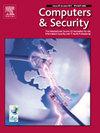Covert timing channel detection based on isolated binary trees
IF 4.8
2区 计算机科学
Q1 COMPUTER SCIENCE, INFORMATION SYSTEMS
引用次数: 0
Abstract
As a communication method for concealing information, the covert network channel is often exploited for malicious purposes due to its inherently difficult-to-detect nature, posing potential risks to network security. In this paper, we propose a detection method based on isolated binary trees, aiming to address the problem of the novel covert channel imitating legitimate traffic patterns and injecting additional anomalies to evade detection. This method is based on the Isolation Forest algorithm, which can be classified into different categories by analyzing the stepwise function features of network traffic and using isolation binary trees generated with random split thresholds. At the same time, we validate the proposed detection model using a publicly available dataset. The experimental results demonstrate that eliminating outliers significantly enhances the stepwise function features while preserving the original form of legitimate traffic. Compared to the model without outlier handling, the average AUC scores for TRCTC and Jitterbug improved by 7.37% and 2.23%, respectively. Furthermore, we achieved superior performance on a new channel named -libur and -libur-O compared to using deep learning-based detection methods.
基于隔离二叉树的隐蔽时序通道检测
隐蔽网络信道作为一种隐藏信息的通信方式,由于其固有的难以检测的特性,经常被恶意利用,给网络安全带来潜在的风险。在本文中,我们提出了一种基于隔离二叉树的检测方法,旨在解决新型隐蔽通道模仿合法流量模式并注入额外异常以逃避检测的问题。该方法基于隔离森林算法,通过分析网络流量的逐步函数特征,利用随机分割阈值生成的隔离二叉树,将网络流量分类为不同的类别。同时,我们使用公开可用的数据集验证提出的检测模型。实验结果表明,在保留合法流量的原始形式的同时,消除异常值显著增强了逐步函数特征。与未处理异常值的模型相比,TRCTC和Jitterbug的平均AUC分数分别提高了7.37%和2.23%。此外,与使用基于深度学习的检测方法相比,我们在名为λ κlibur和λ κlibur- o的新通道上取得了更好的性能。
本文章由计算机程序翻译,如有差异,请以英文原文为准。
求助全文
约1分钟内获得全文
求助全文
来源期刊

Computers & Security
工程技术-计算机:信息系统
CiteScore
12.40
自引率
7.10%
发文量
365
审稿时长
10.7 months
期刊介绍:
Computers & Security is the most respected technical journal in the IT security field. With its high-profile editorial board and informative regular features and columns, the journal is essential reading for IT security professionals around the world.
Computers & Security provides you with a unique blend of leading edge research and sound practical management advice. It is aimed at the professional involved with computer security, audit, control and data integrity in all sectors - industry, commerce and academia. Recognized worldwide as THE primary source of reference for applied research and technical expertise it is your first step to fully secure systems.
 求助内容:
求助内容: 应助结果提醒方式:
应助结果提醒方式:


